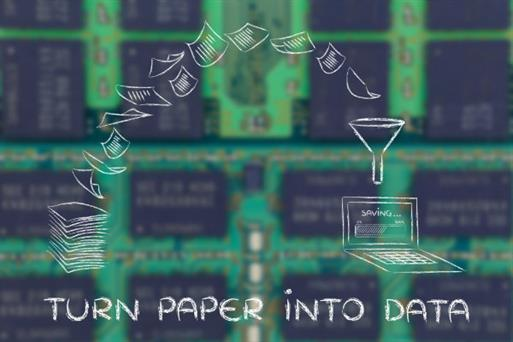It’s only taken another 40 years, but a paperless office is finally achievable for most small businesses. One of the biggest challenges of going paperless has been managing those thousands of bits of paper called receipts and supplier invoices. Finally there’s an easy and efficient answer.
Receipt Bank is an award-winning service designed to eliminate manual data entry of bills, receipts and invoices. Simple to use, it lets you focus on running your business while being 100% confident that all those vital documents are just a key-stroke away. It’s an important step to becoming a paperless office. No more paper, no more A4 folders and no more time wasted on filing!
How does it work you ask?
• Simply submit your supplier invoices, cash or credit card receipts to Receipt-Bank via theirsmartphone App, dedicated email address orby scanning and uploadingto their website.
• Key data is extracted from the document and securely stored in a digital format ready to auto-importinto your cloud accounting software such as QuickBooks Online and Xero.
• Your data can then be sent to your accounting software, along withan image of the source document, making compliance and reconciliationsa breeze for you, your bookkeeper and your accountant!
• You’ll never struggle to find an invoice or receipt again. Your documents are stored (and available to you) for 7 years.
Finally an easy to use productivity tool that really helps you go paperless by automating your payments process and removing the costly need for data entry!
For more information on Receipt Bank, head to www.receipt-bank.com

Top tips for creating a paperless office:
1. Reduce and discourage paper usage – track the number of pages printed per person and generate a monthly report and email it to employees.
2. Make it less convenient to print – reduce the number of printers in your office.
3. Request paperless statements from banks and service providers such as telecoms companies.
4. Actively support a culture of reuse and recycling.
5. Do away with physical signing of printed documents, particularly internal ones, unless absolutely necessary.
6. Reproduce internal documents on online notebooks such as Google Docs or Evernote.
7. Discard fax from your business process and replace paper forms with editable pdf forms.
8. Consider a dual or multi-monitor setup so that documents can be easily cross checked when necessary.
9. In order to work with vendors or clients who insist on using a fax, sign up for an online fax provider who can email a faxes directly to an inbox.
10. Digitise paper notes and printed literature.
11. Optical character recognition (OCR) software turns static images or PDF files into editable files.
12. For inevitable paperwork that must be signed, print on both sides.
13. A variety of Apps, including CamCard and WorldCard Mobile will capture the content of business cards and generate a digital contact.
14. For businesses that don’t own a hardware scanner, Apps such as TurboScan and Scanner Pro can capture documents with a Smartphone’s in built camera.

